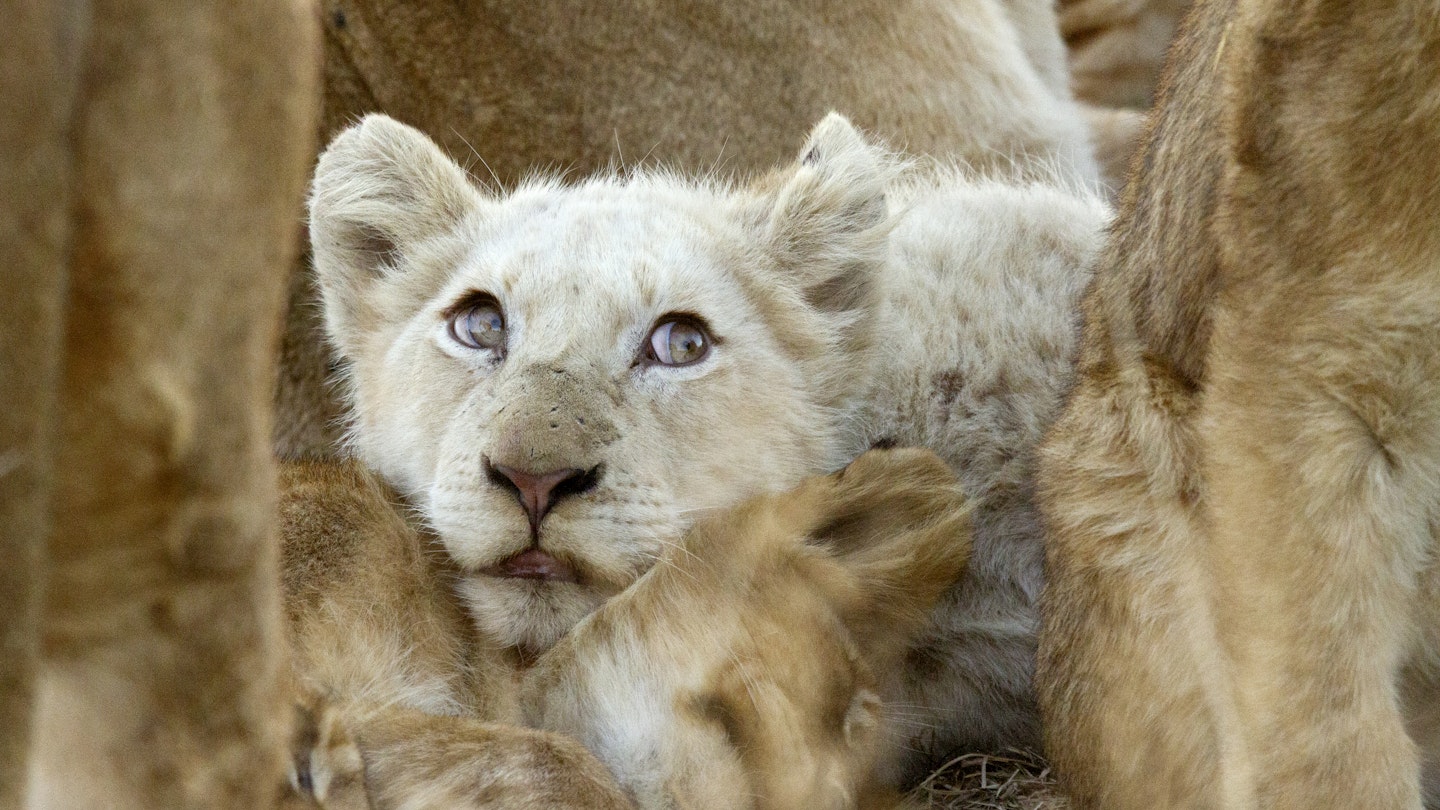White Lions of Ngala: A Precious Rarity in the African Wilderness
‘The white lions don’t exist,’ my safari guide says with a smile and twinkle in his eye, ‘they are just myths.’
Whispers of these magnificent creatures have emanated from the lands of Timbavati and southern Kruger in South Africa for centuries. Today, however, three wild white lions are known to exist, with two beautifully residing within the 148-sq-km Ngala Private Game Reserve. The name “Ngala” translates to lion in the local Shangaan language, fitting for its noble inhabitants.
I tell Dyke Khosa, a seasoned safari guide with 28 years of experience, that seeing a white lion in Ngala would be a dream come true. His knowledge of the region extends beyond his guiding duties; it stems from a lifelong connection to the wild. As a child, he spent his days foraging with his grandfather, a traditional healer, navigating miles of bush on his own, honing his understanding of the land and its wildlife.
“I have lived my entire life in this area, and the white lions were just animals spoken of in stories told by elders.”
Until two years ago, these white lions were indeed a myth. Sporadic sightings have always emerged, but the gene that produces their unique ivory white fur remains a rare mutation endemic to this small region in Africa, the only place where white lions have ever been found in the wild.
Against All Odds
In 2017, two lionesses from the Birmingham pride—the largest in Ngala—gave birth to seven cubs. To everyone’s astonishment, three of these cubs were white, after decades without a single white birth. Tragically, their excitement turned to sorrow when two Ross males fought for the Birmingham pride and killed all the cubs to secure their lineage.
The survival statistics of lion cubs are grim; less than half reach one year old, and the odds are even slimmer for white cubs. Khosa explains that being able to camouflage within the bush is crucial for a cub’s survival, as they are frequently left alone during hunts, making them targets for predators.
White lions are a genetic anomaly, arising from an extremely rare leucistic gene that facilitates a partial loss of pigmentation, unlike full albinism, which preserves color in other features. Moreover, the gene is recessive; thus, both parents must carry it, regardless of their own coloration. Miraculously, the gene has re-emerged after years in October last year when a lioness from the Birmingham pride gave birth to a robust white male, followed shortly by a female cub.
Searching for Treasure
On a chilly morning wrapped in thick blankets, we set off shortly before 6 a.m., embracing the peaceful solitude of the African wilderness. Geddes, Khosa’s tracker, meticulously searches the bush with a spotlight, occasionally catching the reflection of bright eyes. Unfortunately, despite finding the Birmingham pride, the elusive white cubs remain hidden.
Khosa received an early morning report—the ‘bush telegraph’—allowing him to infer the movements of the lions by analyzing animal footprints on the dirt track. His sharp eye catches something, and he jumps out of the jeep to continue on foot.
“I think the main pride has split. These are the tracks of two adult females and three cubs.”
Predicting the lions’ movements using his expertise, Khosa believes the pride has separated to enhance their hunting efficiency, as the white cubs risk exposing their position.
The Enchantment of White Lions
With hope dwindling, Geddes radios that he has found the cubs. We venture deep into the bush, relying on directions unique to Africa: “Halfway along the second track from the channel head east, you’ll spot a line of burnt knobthorn trees.” Adrenaline surges as we speed towards the pride.
Upon navigating through shrubs and trees, we finally find a termite mound, and excitement builds as I catch a flash of white—a 10-month-old male cub rolling beneath a bush, gazing at me with sparkling eyes.
The younger female pounces over her tawny brother to nurse from their mother. Notably, the white cubs are more prominent than their tawny counterparts, with distinctive, vibrant personalities that illustrate their determination to thrive despite their unique challenges.
The Conservation Challenge
However, lions across Africa face significant challenges from habitat loss and illegal wildlife trade. In just 25 years, the lion population has halved. The team at Ngala is dedicated to wildlife conservation, implementing various strategies aimed at preserving the land, protecting wildlife, and educating local communities. These methods include dehorning rhinos and fostering sustainability among local populations, vital for future conservation efforts.
For the white lions of Ngala, their best chance of survival lies in residing undisturbed within the protective reserve, aided by strict viewing policies set by &beyond. These measures include limiting vehicle numbers during sightings and prohibiting viewing when cubs are separated from their mothers. Despite this, the cubs benefit from being part of a large pride with abundant hunting resources.
As we depart, I notice Khosa smiling. His earlier disbelief at the thought of seeing a white lion has turned into cherished reality, making every encounter memorable.
“For the first time in decades, we are beginning to see an increase in the number of white cubs born. We know this unique gene pool is slowly growing. Hopefully, this will ensure that for my children’s children, our lions remain more than just myth.”





